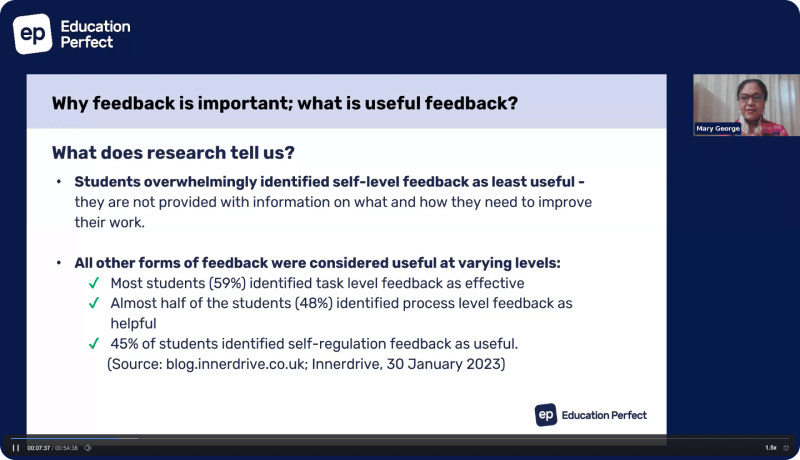Filling Your Cup: Mindfulness for Teachers

Teaching is a profession where you give, give, give. And as the saying goes, it’s impossible to fill from an empty cup, so let’s have a look at the latest buzz around mindfulness, and see if all the hype is really justified.
“Keeping your own wellbeing in mind is essential to create the experiential conditions to inspire students to learn” (Siegel, 2013).
What is mindfulness?
Mindfulness is about being present and fully engaged with whatever task you are doing. It’s not about eliminating thoughts or floating in a zen-like state all day long, but being aware of your thoughts and feelings without getting caught up in them (Headspace, 2019; Kabat-Zinn, 1994).
How can mindfulness help in teaching?
Teaching can be stressful. Teacher burnout is real, and schools and government are increasingly (if somewhat slowly) acknowledging the importance of teacher wellbeing (Ministry of Education, 2019). Teacher wellbeing is multi-faceted and holistic. It is a construct involving “teachers’ models of the quality of their personal, professional and relational selves” (Spilt, Koomen, & Thijs, 2011). While systemic changes are required to decrease workload, reduce class sizes, and increase overall support, these factors are often outside of the control of the average classroom teacher so this article focuses on how mindfulness might be one way to provide a more immediate and tangible relief to overwhelm and stress.
Patricia Jennings (2015) discusses how mindfulness can help teachers understand their own emotions better, help communicate more effectively with students, set up a positive learning environment, and help them slow down when needed. Hwang et al. (2017) conducted a systematic review of mindfulness interventions and highlighted positive effects such as coping better with stress, difficult emotions and conflict, and increased self-compassion, clarity of mind and self-awareness.
How do I practise mindfulness?
“Being mindful arises out of our own personal mindfulness practice – both formal (sitting meditation, body scans etc.) and informal (bringing mindful awareness into our daily activities and into our relationships)” (Hawkins, 2017).
Meditation has been shown to reduce stress levels (Jayawardene et al., 2017). I’ve experimented with a range of mediation apps such as Headspace, Insight Timer and Calm. I use Headspace a few times a week and particularly like their mini one, two or three minute refresh or unwind sessions. This is something you could feasibly do just before the start of another lesson, during lunch or before a departmental meeting.
Mindfulness can also be cultivated through movement of the body. It is through focusing on the movement of the body that the mind can quieten. This might be running, walking, dancing, playing a team sport, or yoga. On particularly long days when I’m too whacked to get to the gym, I quite like online yoga with Yogaholics. They are an Australian online yoga platform with 5 to 90 minute yoga sessions as well as guided meditation classes with categories such as ‘breathe’, ‘get present’ and ‘get charged’.
“The relationship to the body was crucial for teachers in practising mindfulness. They often became aware of stress held in their bodies (e.g., shoulders) and of how to release it (e.g., rolling shoulders)” (Hwang et al., 2017).
When you’re in the class or zooming to your next meeting, what can you practically do to alleviate the feelings of stress and overwhelm?
- Build into your daily routine a few moments where you can simply observe your thoughts. What does this mean? Imagine your thoughts as cars on a motorway. It’s easy to get swept up by the traffic. Instead, sit by the side of the road and simply watch the cars rush by. It’s not about stopping or reducing the noise, it’s about shifting your perspective. This video explains it further.
- Focus on the breath: slowly inhale and exhale, counting each breath (up to ten) as you do it. Simply bringing the focus on the breath means you are present in that moment.
- Notice how your body is feeling. Start at the top of your head and evenly move down to your feet to identify what feels comfortable or uncomfortable. Afterwards, ask yourself where are you holding the stress and what movements can you do to release it?
Incorporating mindfulness into your life as a teacher certainly won’t solve all of the issues, but it may be a useful tool in your toolkit to help you tackle the challenges you face with a calmer, more resolute mind.
What are some ways you practise mindfulness? Is it something you could incorporate into your teaching day?



